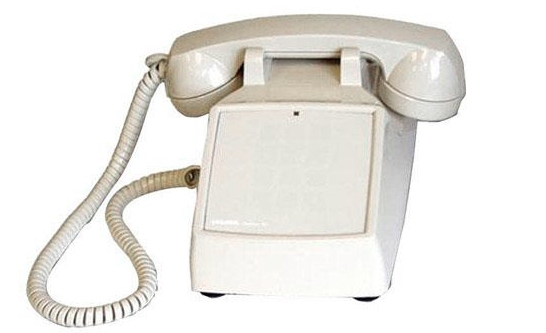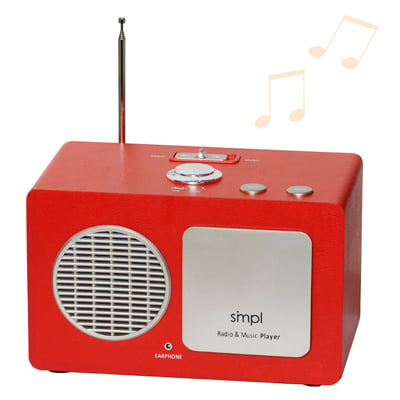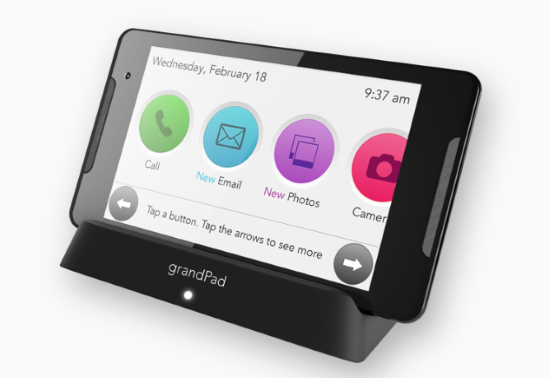AT for Dementia and Companionship

Recent gifts for my mother inspire this unusual post.
In September my mother moved to a memory care residence on Long Island. She promptly pulled the fire alarm.
“That’s what you get,” she told the staff when they’d finally figured out who triggered the building-wide crisis. She sat in her wheelchair by the alarm box watching the mayhem with satisfaction.
Her move followed a month in a hospital where she was diagnosed with dementia characterized by paranoia and delusions. In hindsight, the symptoms had been developing for years. As a result, she’s now socially isolated. She’s burned a lot of bridges, including, nearly, mine.
For those of us going through this with a family member, anything that can help is profoundly appreciated. Below are five technology ideas. The first two have made a difference for my mother’s quality of life and my capacity to connect with her.
One: A Dial-less Phone

I found this phone online 10 years ago while compiling a resource page of assistive technology (AT) for behavioral challenges. The phone is a landline telephone that receives calls but is missing its dial pad so it cannot dial out. At the time, I couldn’t have fathomed I’d ever have cause to buy it. This fall I began considering the Dial-less phone for my mother.
Providing Mom a conventional phone was not an option because she has a history of calling the police on her caregivers. Without a phone in her new residence, however, she was furious to be cut off from the world. My brother and I agonized over what to do.
We discussed the one-way phone for several weeks. Wouldn’t a phone without a dial pad seem like a cruel hoax? Confirmation of all her suspicions? Then her older brother attempted to reach her with assistance from the recreation director and the whole process took so long and was so arduous, we decided to bite the bullet and install the Dial-less phone. She’s angry anyway, I reasoned. What difference would it make?
The difference was significant and positive. Her disease, it turned out, had progressed so that she does not realize the phone is designed to be different. She believes she has not yet learned to use it (like the TV remote). It’s clear, too, that having a phone, regardless of whether it rings, has given her back a bit of dignity. And it’s a relief to me that I can call her and give her number to friends and family. Despite her raging, she has still managed, “I love you, too, and I’m so glad you called.”
Note: during my last visit, I turned the phone around so that it faces away from her, making the handset easier to reach and the missing dial pad out of sight… out of mind.
Two: A Robotic Dog

My mother has always had an enthusiasm for stuffed animals. Recently, however, she’s created elaborate stories about the stuffed dog I sent her when she moved, as well as about an imaginary pet she says is real. So when I learned there are robotic dogs on the market designed for elders with dementia, I suggested we try one as a holiday gift. Her new companion has soft fur, a beating heart, and responds to touch and speech with movement and yips.
At first, the Joy for All dog was too noisy for her and looked like a mistake to buy. But a week later, I called and heard the pup with her in bed yipping. She proceeded with her usual rage and delusions, but when she spoke of the dog, her voice softened. “It needs my care,” she told me. “It likes to be tightly wrapped.” She said, too, that she can feel its heart beating and it can hear hers. “She learned English overnight. She mimics everything I say.” (Note: the dog barks only.)
The dog got me through that phone call. When her topics became especially difficult I asked her what her dog was doing and she switched gears, forgetting what she’d been ranting on about. I was also cheered to hear the dog is attracting a lot of attention. “Everyone wants to touch her and talk to her,” Mom said.
A few days later the Hospice chaplain called to say she’d just visited my mother. I asked about the dog and she immediately brightened, “I wondered where that came from. At first, I thought it was real. It’s making such a difference for her. She has it with her like it’s a part of her.”
I’ve since learned there is a range of companion stuffed pets (and realistic baby dolls) designed specifically for people with dementia. They include dogs and cats that appear to sleep and breathe, pillow-style pets with pockets for fidgeting hands, and stuffed animals custom-made to resemble a beloved real pet.
One use I will have to try is the application of lavender oil for aromatherapy. My mother appreciates when I rub some on her temples and wrists. Lavender oil applied to the stuffed dog’s head might also be soothing in bed.
Read more about robotics and the elderly
Check out the high-tech pup debuting at CES 2020
Three: A Simple Radio

Simpl Radio and Music Player offers both access to a radio station and an MP3 player.
Another option I’ve been considering for my mother is a simple radio designed for individuals with dementia. When she first moved to the residence, I made sure she had a Walkman-style tape deck and headphones from home as well as a meditation tape she’s used in the past. This proved too much for her to manage or remember to use. A radio with a single button, however, set to a station she’s always enjoyed, could offer her a sense of companionship.
Some of these products come with recorded music as well: big bands or other American standards. Favorite music may, instead, be uploaded. Some additionally include a jack for headphones.
Here’s a review of three radio/music players for people with dementia.
Four: A Talking Photo Album

I made my mother a photo album of pictures of our family over the last year with captions as a holiday gift. I can imagine the usefulness of a talking photo album, however, for another stage of dementia.
These are albums that can record custom audio messages to accompany each picture (albums vary with recording storage capacity). They are useful tools for reminiscing and can be used in a myriad of creative ways, including as communication aids, teaching step-by-step instructions for a task, and medication administration. This vendor page describes a number of uses for a talking photo album in detail.
As a tool for companionship, I’m struck by the recommendation to collect and upload audio files emailed from friends and family for corresponding pictures in the album. A talking photo album could be a powerful tool for feeling more connected and reminiscing with visitors.
Five: The GrandPad

While not appropriate for my mother, my in-laws would probably love a simplified tablet computer providing access to family members and solitaire. That’s the GrandPad. What I like best is how it requires no typing, creates a safe private network, and provides intensive customer support. With a GrandPad a user can:
- read and send email (voice recording is an option)
- receive and view photos uploaded by family in the network via a mobile app.
- make voice or video calls (unlimited data, no Wi-Fi required)
- surf the internet (to limited sites or with full access)
- play games and music (unlimited streaming)
- access transportation services
- use the camera, calculator, other tools
- get the weather
The GrandPad service is provided through Consumer Cellular for $40/month and requires no contract. The tablet is an additional $200 ($10/mo. is an option).
The Oregon AT Program, Access Technologies, Inc., alerted me to this device in their most recent newsletter (Tech It Easy). Oregon is now providing demonstrations of the GrandPad and a discount for purchasers. Perhaps other states are demonstrating GrandPad, too? To find out, locate and contact your State AT Program. Each state provides demonstrations and short-term loans of assistive technology devices. Try before you buy.
Everyone with dementia is different. Different life histories, talents, personalities and disease stages influence the success or failure of any strategy or technology. I’m learning, however, that what works for others may work for my mother. It’s helpful to know that I am not alone as I try different approaches. I hope this post provides support to readers in the same way.
Monthly Blog Digest
Search the blog
State AT Program Blogs
California
Florida
Indiana
Kentucky
Louisiana
Maryland
Massachusetts
Michigan
Montana
North Carolina
North Dakota
Utah
State AT Program Blogs
The AT3 Center, the Association of AT Act Programs (ATAP), and the Administration on Community Living (ACL) make no endorsement, representation, or warranty expressed or implied for any product, device, or information set forth in this blog. The AT3 Center, ATAP, and ACL have not examined, reviewed, or tested any product or device hereto referred.








